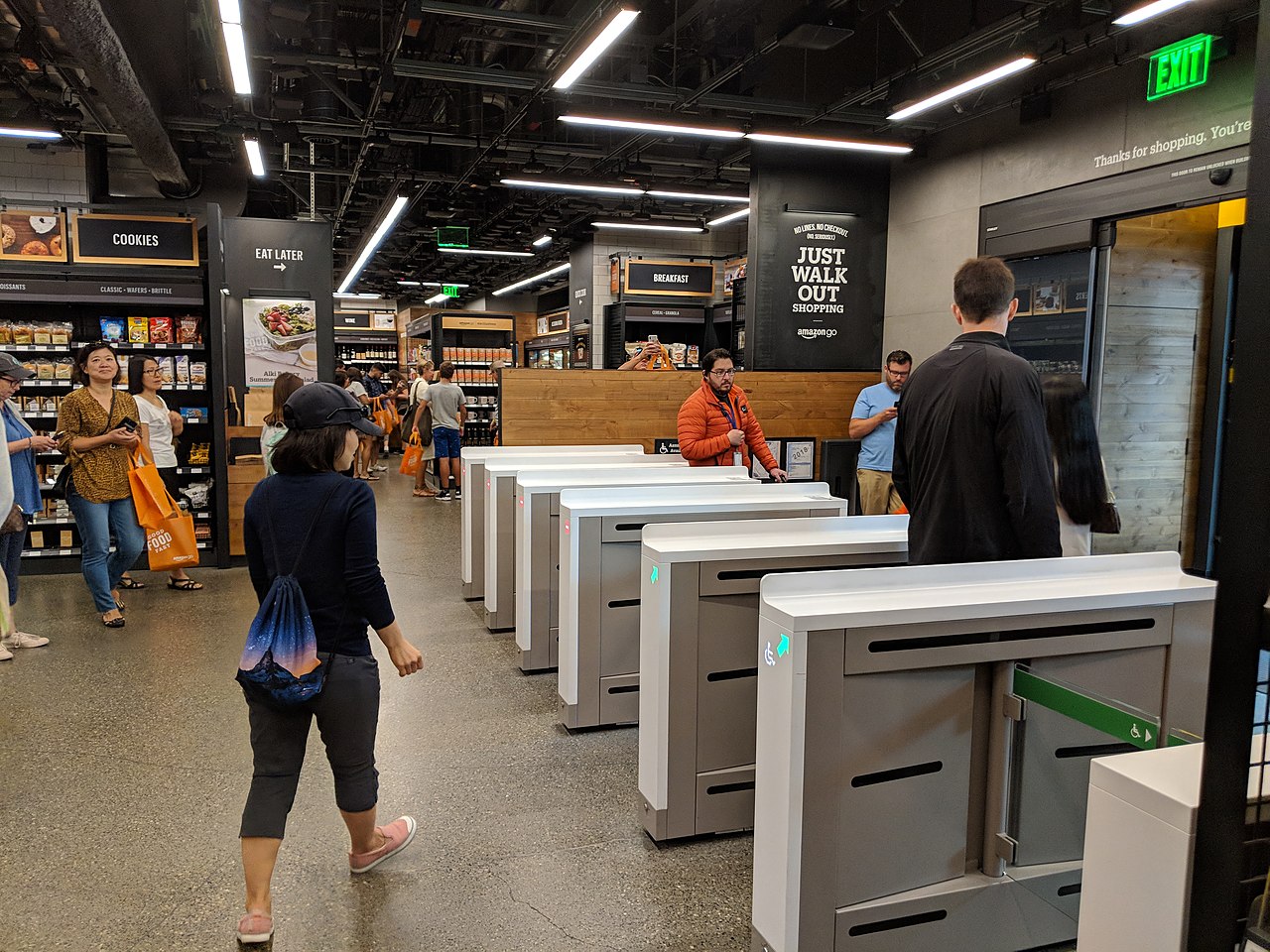
Credit: Wikipedia
AI is huge right now, it's at the forefront of redefining business and how we live our lives. Last blog's article on Direct Mail still holds true for it being a great marketing technique with little competition but let's fast forward.
It's January 2028 and you're walking in downtown New York City, the vaccine has been released and life has returned to normal. You hail an autonomous Lyft car, driven by robots and GPS sensors and step in.
As you head towards the pizza place you're meeting your friend for lunch at, he's a fellow startup founder, you realize you forgot your blazer.
It's cold in New York City right now plus you like dressing up when you go out. Shortly after realizing you forgot your blazer you find a leather jacket online you really like.
The leather comes from stem cell grown fabric, so no animal cruelty was involved and no rain forest was cut down to provide grazing fields for the cows that in 2020 would have been killed and skinned for your leather jack.
Super.
You add the leather jacket to your shopping cart and redirect your thoughts towards the meeting with your fellow business owner friend.
The clothing store's AI connects with your iPhone, Samsung or Android's AI and reroutes the autonomous self driving Lyft car.
You now arrive at the clothing store, pulling up right in front of the front doors. You get out and go to a terminal like an ATM but bigger just to the left of the front doors.
Opening an app on your phone you hold the screen facing scanners on a digital display and check in. Within 2 minutes a sales rep comes out with your new leather jacket.
It fits perfectly as the store has an online profile for you with all your sizes 3D body scanned with a Wii sensor from your phone. Your shoes also have weight sensors that adjust as you gain or lose weight.
There was no line at the store and the cost of the jacket was automatically deducted from your bank account as soon as the sales rep handed it to you, because sensors tracked the process from online to storefront coordinated with your payment profile with the store and Lyft.
Additionally, running on an automation, the store's marketing department already knows this is your first purchase and by the time you get home from lunch there's a coupon QR code emailed to you for 20% off your next purchase.
The store's inventory automatically updates, as there are also sensors built into the clothes rack your jacket hun on and sends an order fulfillment email based on existing supply and demand for this product.
Back up inventory is already on the way from the warehouse as this jacket has been trending this year.
The Internet of Things
As much as that may sound futuristic, it isn't that far off from where we are right now due to advances in AI and the increased prevalence and efficiency of the Internet of Things (IoT).
Smart toasters, smart NEST Wi-Fi-enabled thermostats (who once tried to recruit me to work for them) and fitness collars for dogs are just a few examples of IoTs
If you're not familiar, here's Wired's explanation of what the Internet of Things is and does:
"In the broadest sense, the term IoT encompasses everything connected to the internet, but it is increasingly being used to define objects that "talk" to each other. "Simply, the Internet of Things is made up of devices – from simple sensors to smartphones and wearables – connected together," Matthew Evans, the IoT program head at techUK, says."
"By combining these connected devices with automated systems, it is possible to "gather information, analyse it and create an action" to help someone with a particular task, or learn from a process. In reality, this ranges from smart mirrors to beacons in shops and beyond."
Smart Checkouts
The vast majority of people are not aware of some of the newest tech that has arrived and automatic checkouts have already been created.
January 2018 Amazon released the first Amazon Go store in Seattle, Washington. In 2019, they released 7 more stores and plan for 3,000 Go stores by 2021.

Credit: Wikipedia
So how does it work? Essentially, you walk in, get what you want and are automatically charged for it - no cashier, no self-check out of scanning things yourself. Just stroll in, grab what you need and peace out.
From the Wiki on Amazon Go:
The Amazon Go app for iOS and Android links to their Amazon account and is the primary method of paying for items at the store, alongside cash at certain locations. The app is required to enter the store, which has turnstiles that scan a QR code generated on the app.
The app allows users to add others to their Amazon account, so a family's purchases can be charged to the same bill. The ceiling of the store has multiple cameras and store shelves have weight sensors, to detect which item(s) a customer took.

Credit: Wikipedia
If a customer takes an item off the shelf, it will be added to the customer's virtual cart. Similarly, if a customer places an item back on the shelf, it is removed from the customer's virtual cart.
What Are the Implications of Automated Checkout?
Retailers will save billions on employee wages they have to shell out, as well as benefits, training managers and more.
There will be less space needed without cashier stations as well so that adds to store's real estate to stock more products in the same amount of space. But Business.org reports a few drawbacks.
At the same time, if a UPC doesn't scan correctly or an item isn't provided that was there last week or you just can't find something - customer service will take a hit.
There may be a way to jerry rig the system to increase theft as well through burner phones or if a thief stole your phone and you didn't have a screen lock on it.
The lack of one-on-one interaction is probably the biggest loss in my opinion. I enjoy interacting with cashiers, waitresses, baristas and more - it's a good way to break the covid cabin fever now and even in normal times humanizes the buying process and adds some social spark to the day.
What do you think?
. . .
Enjoyed this blog?
Signup here to get updates on new startup blogs.
Is Facebook not explaining why the disapproved an ad?
I worked at FB for years and offer FB Policy Consulting here
Available for freelance writing and guest posting on your blog: [email protected]





